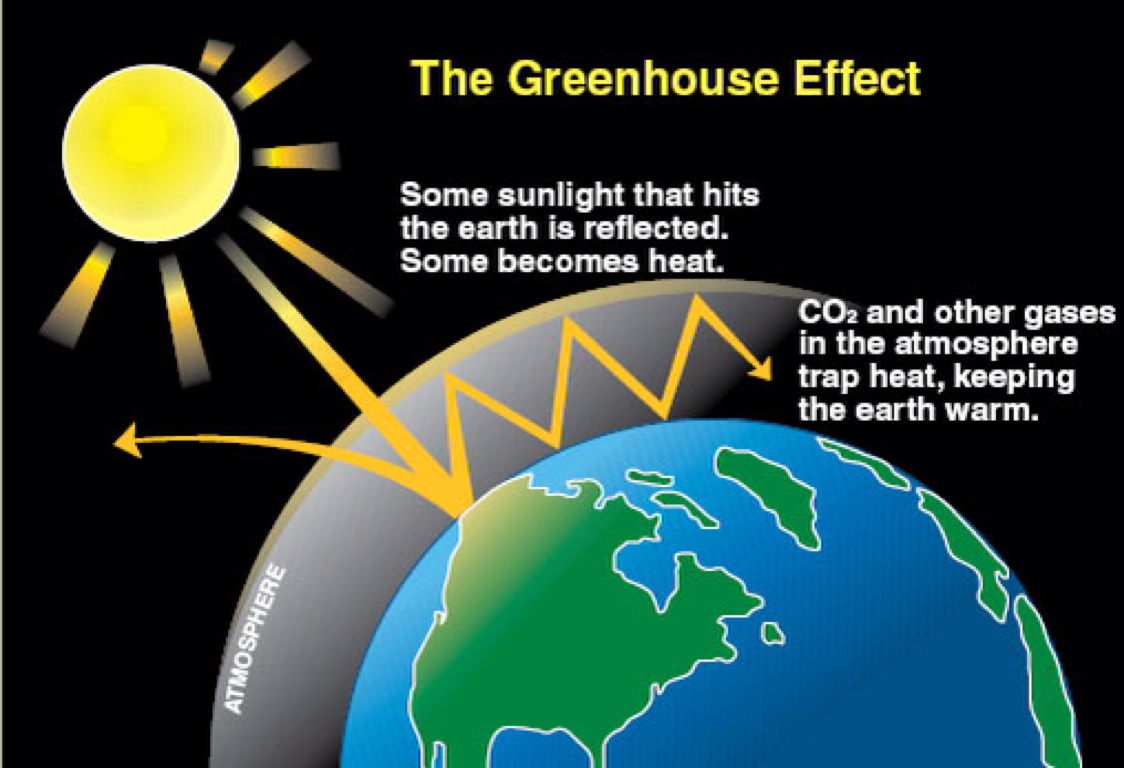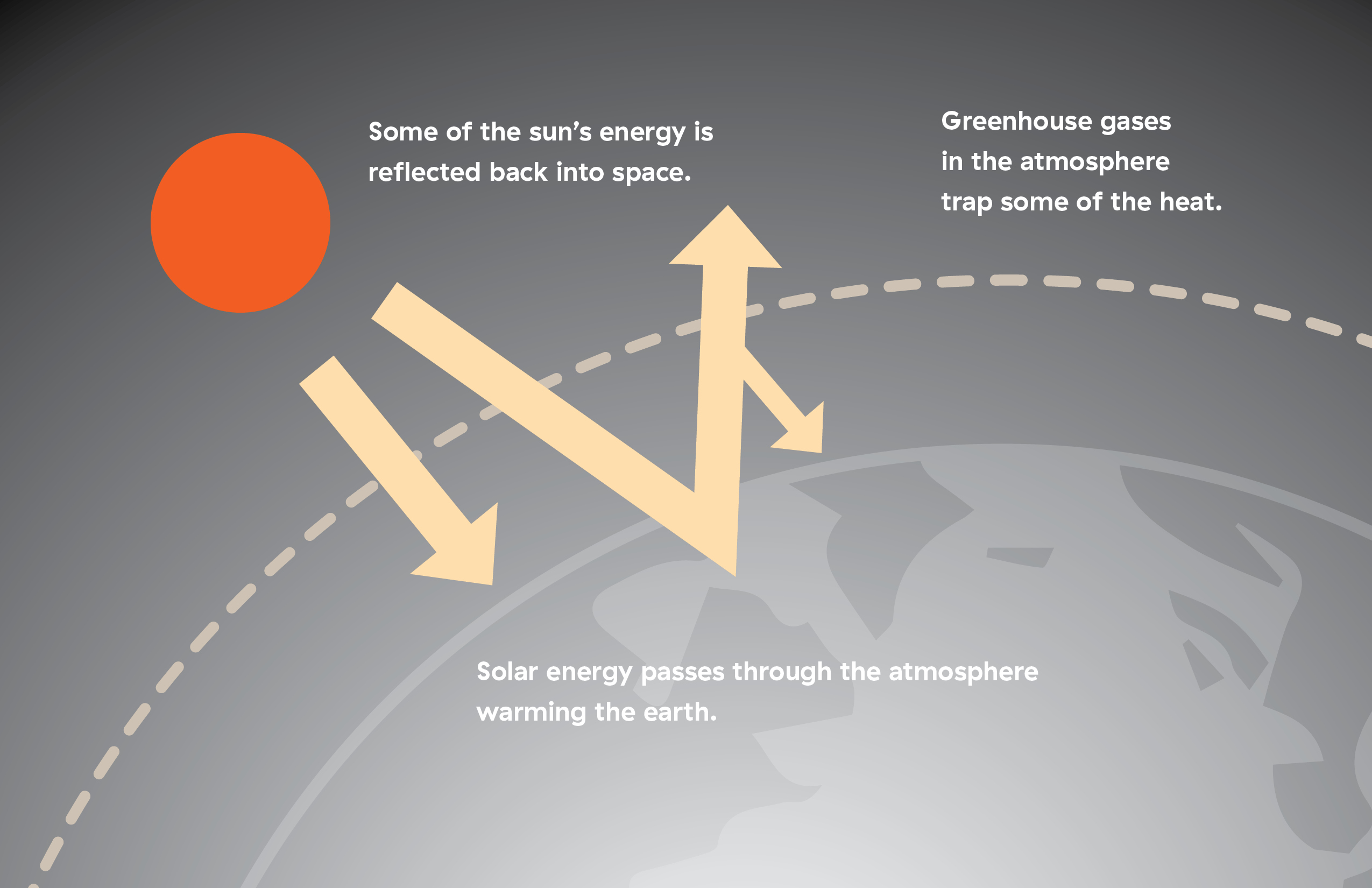What is the greenhouse effect?
Table Of Content

Energy from the Sun that makes its way to Earth can have trouble finding its way back out to space. The greenhouse effect causes some of this energy to be waylaid in the atmosphere, absorbed and released by greenhouse gases. Gases which can absorb and emit longwave radiation are said to be infrared active[61] and act as greenhouse gases. Gases in the atmosphere, such as carbon dioxide, trap heat similar to the glass roof of a greenhouse. Global warming describes the current rise in the average temperature of Earth’s air and oceans.
The Greenhouse Effect
The depletion of the ozone layer results in the entry of the harmful UV rays to the earth’s surface that might lead to skin cancer and can also change the climate drastically. Basically, Earth is not able to expel enough heat to keep itself cool, resulting in what's become known as "global warming." It's the greenhouse effect gone wild. The process gets its name from the greenhouses that stay nice and warm for growing plants. This is basically the same process that keeps Earth nice and warm for sustaining life. One example of the greenhouse effect that most of us experience in everyday life is the warming of a car's interior when the vehicle is left out in the sun.
Another weapon to fight climate change? Put carbon back where we found it
Greenhouse gas concentrations surged to record - The Washington Post
Greenhouse gas concentrations surged to record.
Posted: Wed, 15 Nov 2023 08:00:00 GMT [source]
Other sourcesThis category includes emissions from energy-related activities other than fossil fuel combustion, such as the extraction, refining, processing, and transportation of oil, gas, and coal. Globally, according to the IPCC, this sector accounts for 9.6 percent of emissions. While fluorinated gases are far less prevalent than other GHGs and do not deplete the ozone layer like CFCs, they are still very powerful. Over a 20-year period, the global warming potential of some fluorinated gases is up to 16,300 times greater than that of CO2. Find out how global warming affects climate, and explore the different ways climate change is occurring.
What are the major greenhouse gases?
However, due to the increased levels of greenhouse gases, the temperature of the earth has increased considerably. If there were not any greenhouse gases in the atmosphere, all that heat would pass directly back into space. With greenhouse gases present, however, most of the long-wave radiation coming from Earth’s surface is absorbed and then re-radiated in all directions many times before passing back into space.
All of these human activities add greenhouse gases to the atmosphere. The rise in Earth’s average temperature contributed to by human activity is known as global warming. The delicate balance of life on our planet hinges on a complex array of factors. From erupting volcanoes and wildfires, to deforestation and fossil fuels, the carbon cycle is affected by nature and human activities. For example, the voracious burning of fossil fuels for energy is artificially amping up the carbon dioxide greenhouse effect. This results in rising temperatures that are altering the planet’s climate system, causing catastrophic climate change.
Everyday Environmental Tips
The wavelengths of thermal radiation emitted by the Sun and Earth differ because their surface temperatures are different. The Sun has a surface temperature of 5,500 °C (9,900 °F), so it emits most of its energy as shortwave radiation in near-infrared and visible wavelengths (as sunlight). In contrast, Earth's surface has a much lower temperature, so it emits longwave radiation at mid- and far-infrared wavelengths.[6] A gas is a greenhouse gas if it absorbs longwave radiation. Earth's atmosphere absorbs only 23% of incoming shortwave radiation, but absorbs 90% of the longwave radiation emitted by the surface,[9] thus accumulating energy and warming the Earth's surface.
What is a greenhouse gas?

Many human societies depend on predictable rain patterns in order to grow specific crops for food, clothing, and trade. If the climate of an area changes, the people who live there may no longer be able to grow the crops they depend on for survival. Some scientists also worry that tropical diseases will expand their ranges into what are now more temperate regions if the temperatures of those areas increase. Glaciers and ice caps cover about 10 percent of the world’s landmasses. If all of this ice melted, sea levels would rise by about 70 meters (230 feet).
Fluorinated gases include chlorofluorocarbons (CFCs), hydrochlorofluorocarbons (HCFCs), and hydrofluorocarbons (HFCs). They are produced during the manufacturing of refrigeration and cooling products and through aerosols. More acidic water can be harmful to many ocean creatures, such as certain shellfish and coral.
Some greenhouse gases come from natural sources, for example, evaporation adds water vapor to the atmosphere. Animals and plants release carbon dioxide when they respire, or breathe. There is evidence that suggests methane is released in low-oxygen environments, such as swamps or landfills. Volcanoes—both on land and under the ocean—release greenhouse gases, so periods of high volcanic activity tend to be warmer. Today, concentrations of human-caused greenhouse gases in the atmosphere are higher than ever and the planet is heating up.
First and foremost, we must slash fossil fuel production, consumption, and pollution by ramping up our use of clean, renewable energy and energy-efficient technologies and by investing in fuel-efficient and electric vehicles. The plants and trees do it via photosynthesis (a process by which they turn carbon dioxide into sugars that plants need to grow); the soil houses microbes that carbon binds to. When trees or plants are cut down, they no longer absorb carbon dioxide, and when they are burned as biomass or decompose, they release carbon dioxide back into the atmosphere. In the United States, land use activities currently represent a net carbon sink, absorbing more carbon dioxide from the air than they emit. The surface of the Earth absorbs just under half of the sun’s energy, while the atmosphere absorbs 23 per cent, and the rest is reflected back into space. Natural processes ensure that the amount of incoming and outgoing energy is equal, keeping the planet’s temperature stable.
This effect lets tropical plants thrive inside a greenhouse, even during a cold winter. Human-caused nitrous oxide emissions largely arise from agriculture practices. Bacteria in soil and water naturally convert nitrogen into nitrous oxide, but fertilizer use and run-off add to this process by putting more nitrogen into the environment. The report found that GHG emissions need to be halved by 2030, if we are to limit global warming to 1.5°C compared to pre-industrial levels by the end of the century. Because more energy enters than exits the planet, surface temperatures increase until a new balance is achieved.
Much of the short wave solar radiation travels down through the Earth's atmosphere to the surface virtually unimpeded. Some of the solar radiation is reflected straight back into space by clouds and by the earth's surface. Much of the solar radiation is absorbed at the earth's surface, causing the surface and the lower parts of the atmosphere to warm.
It's this equilibrium of incoming and outgoing radiation that makes the Earth habitable, with an average temperature of about 59 degrees Fahrenheit (15 degrees Celsius), according to NASA. Without this atmospheric equilibrium, Earth would be as cold and lifeless as its moon, or as blazing hot as Venus. The moon, which has almost no atmosphere, is about minus 243 F (minus 153 C) on its dark side. Venus, on the other hand, has a very dense atmosphere that traps solar radiation; the average temperature on Venus is about 864 F (462 C). Understanding the greenhouse effect and the role of different gases is pivotal to mitigating the impacts of climate change.
The dense cloud cover also led to hellish surface temperatures on present-day Venus, with an average of 700 F (370 C) — hot enough to melt lead. Shell ShockA sudden increase in the amount of carbon dioxide in the atmosphere does more than change Earth's temperature. There, it forms carbonic acid in a process called ocean acidification.
Comments
Post a Comment